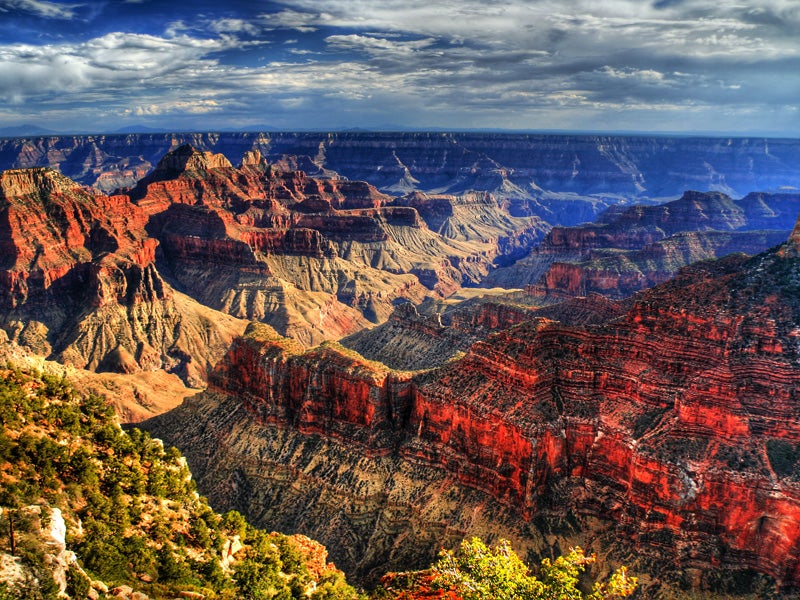Feds May Okay Mega-Mall at Grand Canyon’s Doorstep
Forest Service approval will pave the way for a sprawling urban development within spitting distance of one of America’s most treasured national parks.

This page was published 10 years ago. Find the latest on Earthjustice’s work.
Update, June 4, 2015: Over 200,000 people flooded the U.S. Forest Service with comments over the last month calling for the agency to reject a plan for roads and infrastructure that would enable construction of a mega-development on Grand Canyon’s doorstep. Read the press release here.
The Forest Service is on the verge of making a terrible decision that could damage Grand Canyon National Park, perhaps forgetting the agency’s motto to “sustain the health, diversity, and productivity of the nation’s forests…to meet the needs of present and future generations. Unless, of course, you think the park isn’t that grand, and would be improved by hundreds of canyon-close vacation units, a retail village and a day of exfoliating in the local spa’s mud bath (presumably sans Arizona’s native javelina, an adorable, medium-sized pig). If so, then you may think the Forest Service is on the right track after all.
Last month, the Forest Service began paving the way for a sprawling resort development near the south rim of the Grand Canyon in what is now the small community of Tusayan, Arizona. More than 2,100 housing units and three million square feet of retail space, along with hotels, a spa and a dude ranch, may soon overwhelm the 580-resident community that serves as a gateway to the national park’s southern rim.
This new development threatens to transform Tusayan from a small, quiet tourist town into a sprawling resort complex as little as a mile away from the park’s boundary. Combined with another proposed development on nearby Navajo reservation land, Dave Uberuaga, superintendent of Grand Canyon National Park, has this to say:
“These two projects constitute the greatest threat to the Grand Canyon in the 96-year history of the park.”
A former superintendent, Steve Martin, is equally troubled, as he recently detailed in a lengthy letter.
And the National Park Service is right to be worried. The development’s biggest threat should be obvious in the desert southwest: water, or lack thereof. A new city on the canyon’s edge will require vast quantities of water. Stilo, the Italian developer behind this project, won’t say where it will get the water, but groundwater pumping is the easy—and most damaging—option. Pumping groundwater to feed the development could lower the aquifer that feeds seeps, springs and streams that support wildlife and recreation on the park’s south rim. That same aquifer is also the exclusive source of all water for Havasu Springs, the source of life and culture of the Havasupai tribe.
What’s the Forest Service got to do with this? Stilo needs road and utility access through the Kaibab National Forest to build on its remote properties. Without a permit, development of these utilities can’t proceed. That means the linchpin for the entire massive development is in the Forest Service’s hands.
The Forest Service doesn’t have to say yes to this mess. It could reject Stilo’s permit application as not in the public interest. And it should, which is what we, on behalf of National Parks Conservation Association, Sierra Club, Grand Canyon Trust, and Center for Biological Diversity, told the Forest Service in March. The Forest Service has so far ignored our advice.
But there’s still time to turn them around. The Forest Service is taking public comment on the proposed road and utility permit through June 2 and will also hold informational meetings on the proposal in Tusayan on May 19 and in Flagstaff, Arizona on May 20.
So if you can’t wait to go to the Grand Canyon for the shopping, tell the Forest Service so. But if you want to keep the Grand in Grand Canyon, may we suggest a different letter you can write?
Earthjustice’s Rocky Mountain office protects the region’s iconic public lands, wildlife species, and precious water resources; defends Tribes and disparately impacted communities fighting to live in a healthy environment; and works to accelerate the region’s transition to 100% clean energy.